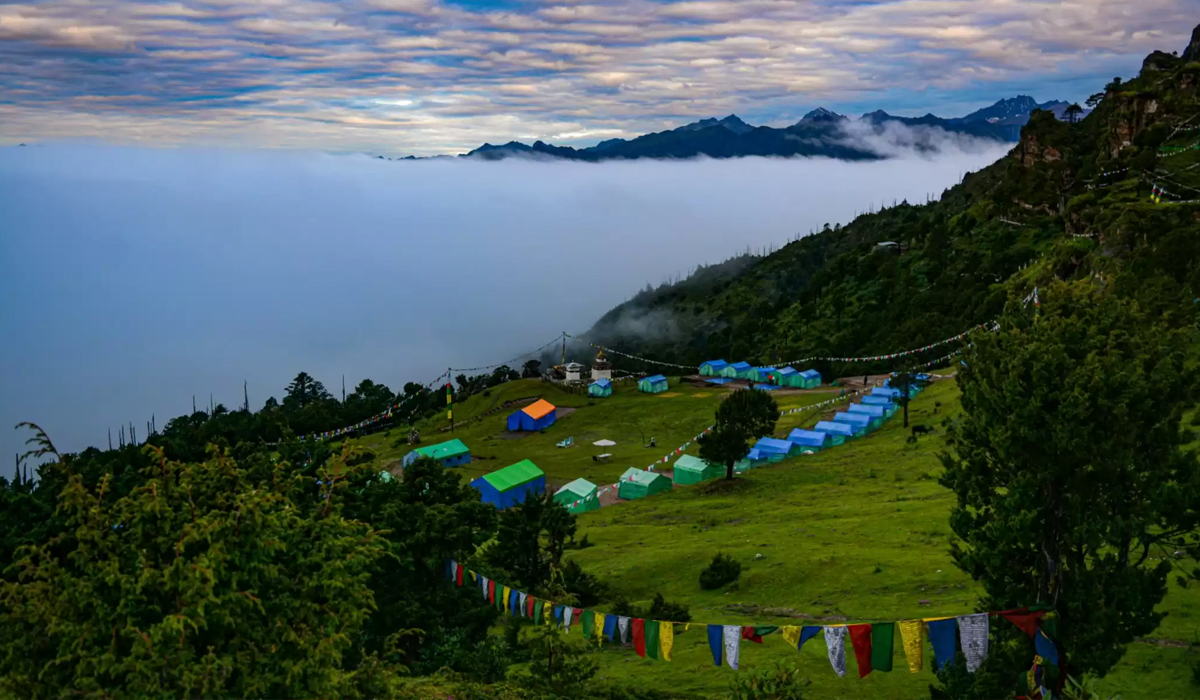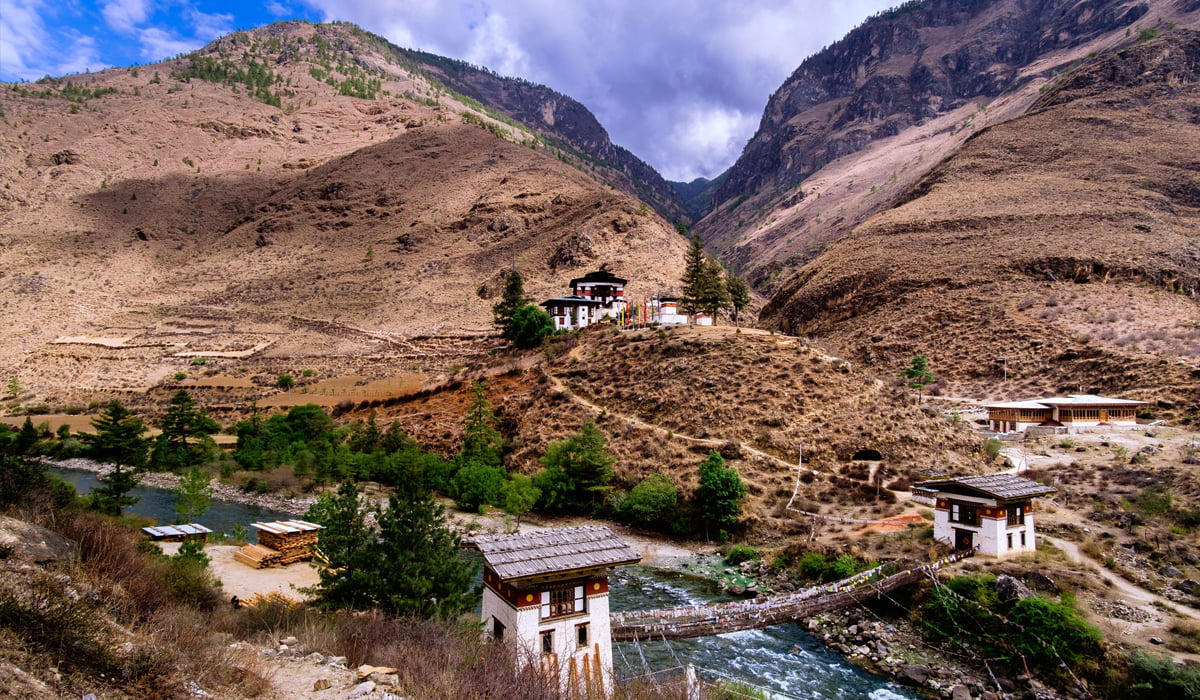


Chelela Pass: The highest motorable passes in Bhutan
Chelela Pass, located at an elevation of 3,988 meters (13,056 feet), is one of the highest motorable passes in Bhutan, offering breathtaking views and a rich cultural experience. Situated approximately 35 kilometers (22 miles) from Paro, this stunning pass serves as a vital link between the Paro Valley and Haa Valley, making it a popular destination for both tourists and locals alike.
Scenic Beauty
Chelela Pass is renowned for its panoramic vistas of the surrounding mountains, including the majestic Jhomolhari and other peaks of the Himalayas. The pass is characterized by its dramatic landscape, with lush green valleys, dense forests, and vibrant wildflowers, particularly in spring and summer. As visitors ascend, they are treated to a stunning contrast between the vibrant hues of blooming rhododendrons and the snow-capped mountains in the background, making it a photographer’s paradise.
Hiking and Outdoor Activities
For outdoor enthusiasts, Chelela Pass offers various trekking and hiking opportunities. One of the most popular trails is the hike to the nearby Chelela viewpoint, which takes approximately an hour and provides breathtaking views of the valleys below. The area is also ideal for birdwatching, with several endemic species inhabiting the region, including the colorful Bhutanese national bird, the Raven.
Spiritual Significance
Chelela Pass holds cultural and spiritual significance for the Bhutanese people. The pass is dotted with numerous chortens (stupas) and colorful prayer flags fluttering in the wind, creating a serene atmosphere for meditation and reflection. The presence of these spiritual markers signifies the deep-rooted Buddhist beliefs of the Bhutanese, as they seek blessings and protection from the deities.
Accessibility
The pass is accessible by car or motorbike, with well-maintained roads leading to its summit. The journey from Paro to Chelela Pass takes about an hour, offering travelers an opportunity to enjoy the scenic drive through lush valleys and charming villages along the way. Due to its high altitude, visitors are advised to acclimatize properly to avoid altitude sickness.
Festivals and Community Roles
While Chelela Pass itself does not host specific festivals, its proximity to the Haa Valley allows visitors to experience local cultural events. The annual Haa Summer Festival, for example, showcases the traditions, music, and dances of the region, providing an opportunity for visitors to engage with the local community and immerse themselves in Bhutanese culture.
Paro - Places to visit

Chelela Pass, the highest road pass in Bhutan, offers stunning views, vibrant flowers, and a scenic route to Paro and Haa.

Chelela Ridge Trek offers breathtaking views of the Himalayas, vibrant flora, and a rich cultural experience in Bhutan’s scenic landscapes.

Bumdrak Trek offers stunning views of the Himalayas, serene monasteries, and unique cultural experiences, making it a memorable adventure in Bhutan.

Dzongdrakha Monastery, perched on a cliff in Paro, features stunning architecture and serene surroundings, offering insights into Bhutanese Buddhism.

Paro Taa Dzong, a historic fortress, houses the National Museum of Bhutan, showcasing the country’s rich cultural heritage and art.

Paro Rinpung Dzong, a stunning fortress-monastery, features exquisite Bhutanese architecture and serves as an administrative center and religious site.

Kyichu Lhakhang, one of Bhutan’s oldest temples, symbolizes Buddhism’s introduction, featuring beautiful architecture and serene surroundings in Paro Valley.

Drukgyal Dzong, a historic fortress in Paro, symbolizes Bhutanese resilience, offering breathtaking mountain views and insights into the nation’s heritage.

Tachogang Lhakhang, located in Paro, is a historic temple known for its stunning architecture and beautiful bridge, symbolizing Bhutanese heritage.

Dungtse Lhakhang, a unique chorten-style temple in Paro, features exquisite murals and offers insights into Bhutanese Buddhism and history.

Taktsang Monastery, or Tiger’s Nest, clings to a cliff in Paro, symbolizing Bhutan’s spirituality and breathtaking natural beauty.
